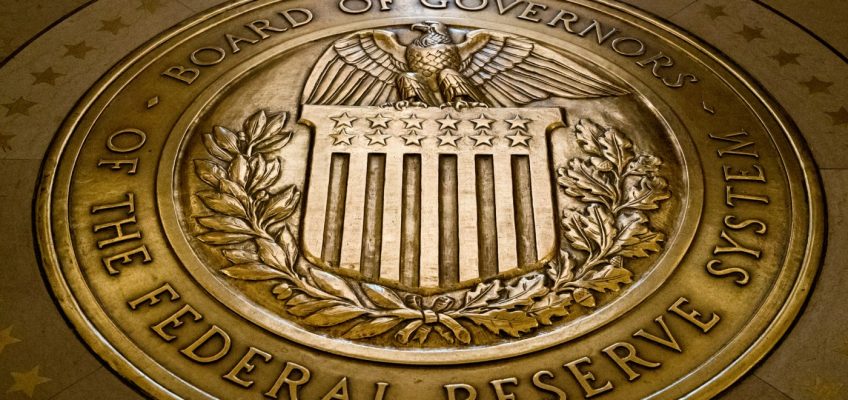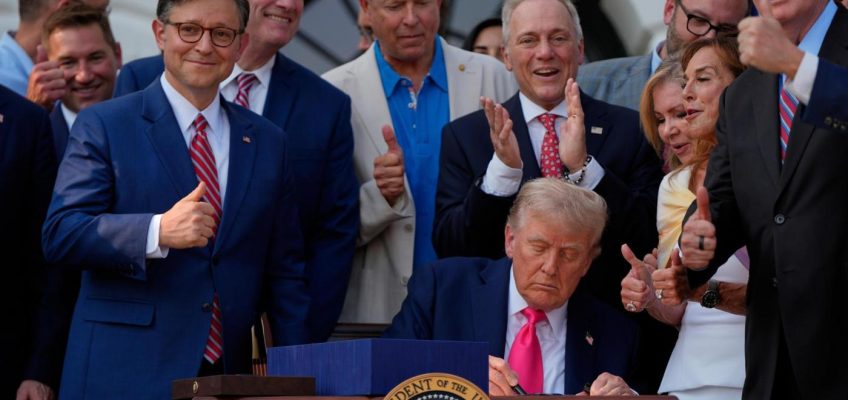By CHRISTOPHER RUGABER, AP Economics Writer
WASHINGTON (AP) — Two top Federal Reserve officials could dissent from the central bank’s likely decision Wednesday to hold its key interest rate steady, a sign of division at the Fed that reflects the economy’s muddy outlook and possibly the jockeying to replace Chair Jerome Powell when his term ends in May 2026.
Related Articles
US stock market holds steady ahead of a Federal Reserve decision on interest rates
Trump announces 25% tariff on India and unspecified penalties for buying Russian oil
Asked on Reddit: How do I recover from a big money mistake?
Along with a strong second quarter rebound for the US economy, some red flags
Watch live: NTSB opens hearings on deadly Washington collision between a helicopter and passenger plane
Based on their public comments in the past two months, it’s possible that governors Christopher Waller and Michelle Bowman could vote against leaving the short-term rate at about 4.3%. If so, it would be the first time two of the seven governors at the Fed have dissented in over three decades.
The division could be a preview of what might happen after Powell steps down, if President Donald Trump appoints a replacement who pushes for the much lower interest rates the White House desires. Other Fed officials could push back if a future chair sought to cut rates by more than economic conditions would otherwise support.
On Wednesday, Trump seized on a report showing the economy expanded at a 3% annual rate in the second quarter as evidence that growth is accelerating and called on Powell to cut rates. Yet the Fed typically reduces borrowing costs when the economy is faltering and threatening to send unemployment higher.
The economy isn’t necessarily doing as well as the 3% figure suggests. It follows a negative reading in the first three months of the year, when the economy shrank at a 0.5% annual rate. Most economists are averaging the two figures to get a growth rate of about 1.25% for the first half of the year. If that sluggishness continues, the Fed could cut rates as early as September.
For now, any dissent also would likely reflect that there are at least two different ways to see the U.S. economy, which is clearly in flux. The first is the way that most Fed officials have described it: Unemployment is at a low 4.1%, while the economy is growing, albeit modestly, and inflation did tick up in June, largely because of tariffs.
So, the thinking goes, why not stand pat on rates and see what happens next? If inflation continues to heat up, a rate cut could make things worse — the Fed typically raises borrowing costs to combat inflation. And as long as the economy is doing well, there is no need to cut to support growth.
The other view is more worrisome: There are signs the economy is weakening, such as sluggish hiring, slower consumer spending, and pretty modest overall growth. The economy, in the first six months of the year, probably expanded at an annual rate of about 1.5%. At the same time, tariffs have lifted inflation by less than many economists had feared, so far.
This is the view of the economy that Waller sketched out in a speech earlier this month.
“Private-sector payroll growth is near stall speed,” Waller said. “We should not wait until the labor market deteriorates before we cut the policy rate.”
When the Fed cuts its rate, it often — but not always — results in lower borrowing costs for mortgages, auto loans and credit cards.
Some economists agree with Waller’s concerns about the job market. Excluding government hiring, the economy added just 74,000 jobs in June, with most of those gains occurring in health care.
“We are in a much slower job hiring backdrop than most people appreciate,” said Tom Porcelli, chief U.S. economist at PGIM Fixed Income.
Waller was appointed to the Fed’s seven-member governing board by Trump during the president’s first term. He has often been mentioned as a potential replacement for Powell. Waller has underscored in several speeches that he does not think Trump’s tariffs will lead to persistently higher inflation.
Bowman, the vice chair for regulation, was also appointed during Trump’s first term. She suggested in June that the Fed should soon reduce borrowing costs. Bowman is also a possible Powell replacement, though more of a long shot.
Michael Feroli, an economist at JPMorgan Chase, said in a note to clients this week if the pair were to dissent, “it would say more about auditioning for the Fed chair appointment than about economic conditions.”
The Fed’s two-day meeting comes after a week of extraordinary interactions with the Trump White House, which has accused Powell of mismanaging an extensive, $2.5 billion renovation of two office buildings. Trump suggested two weeks ago that the rising cost for the project could be a “firing offense” but has since backed off that characterization.
Notably, Trump argues that the Fed should cut because the economy is doing very well, which is a different viewpoint than nearly all economists, who say that a healthy, growing economy doesn’t need rate cuts.
“If your economy is hot, you’re supposed to have higher short-term rates,” Porcelli said.




